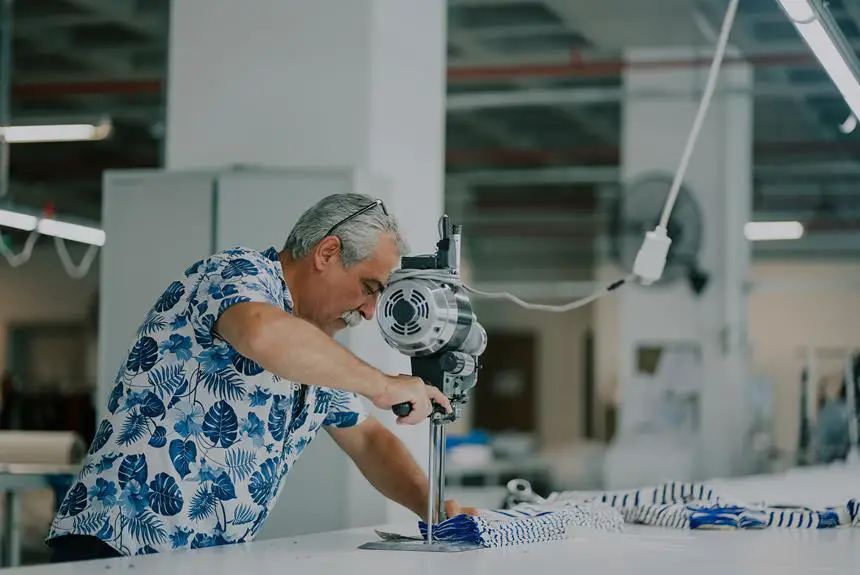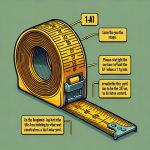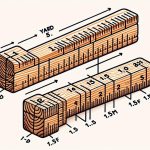When considering sourcing fabric for your clothing line, you may wonder whether wholesale or manufacturing is the best option for your business. Each has its own set of advantages and considerations that can greatly impact your production process.
From cost considerations and quality control to lead time and scalability, the decision between wholesale and manufacturing requires careful evaluation to ensure the best outcome for your business. Understanding the nuances of each option will allow you to make an informed decision that aligns with your business goals and production needs.
Key Takeaways
- Wholesale fabric offers lower costs per yard due to bulk buying.
- Manufacturing fabric allows for more control over the production process.
- Regularly communicate with suppliers, conduct quality audits, and collaborate on problem-solving for strong supplier relationships.
- Wholesale provides effective inventory management and access to diverse distribution channels.
Cost Considerations
When considering cost, you should weigh the advantages and disadvantages of wholesale versus manufacturing fabric.
Wholesale fabric purchasing often offers lower costs per yard due to bulk buying, leading to potentially higher profit margins for your business.
However, with manufacturing fabric, while the cost per yard may be slightly higher, you have more control over the production process, leading to potential production efficiency gains. This can result in lower overall production costs and potentially higher profit margins in the long run.
It's essential to consider the impact of economies of scale when deciding between wholesale and manufacturing. Wholesale fabric may provide cost savings, but manufacturing allows for customization and quality control, potentially leading to higher customer satisfaction and brand loyalty.
Evaluating the production efficiency and profit margins associated with each option will help you make an informed decision based on your specific business needs and goals.
Quality Control
To achieve optimal quality control, you should prioritize consistency and attention to detail in your fabric production process, whether through wholesale purchasing or manufacturing. Quality control is essential to ensure that the fabric meets the required standards and specifications.
Here are some key considerations for implementing quality control in your fabric production:
- Establish an Effective Inspection Process: Develop a comprehensive inspection process that covers all aspects of fabric production, from raw material inspection to the final product. This process should include regular checks at various stages to identify any deviations from quality standards.
- Implement Defect Tracking: Set up a system for tracking and documenting defects throughout the production process. This allows you to identify recurring issues, take corrective actions, and prevent similar defects in the future.
- Train Quality Control Personnel: Invest in training for personnel involved in quality control to ensure they have the necessary skills to identify and address quality issues effectively.
- Utilize Technology for Quality Assurance: Consider incorporating technology-based solutions such as automated inspection systems to enhance the efficiency and accuracy of quality control processes.
Lead Time
To effectively manage lead time in fabric production, consistently monitor the production schedule and minimize delays wherever possible. Production timelines play a critical role in ensuring that fabric orders are completed and delivered on time. By closely tracking the various stages of production, such as sourcing raw materials, processing, and finishing, you can identify potential bottlenecks and take proactive measures to prevent delays.
It's essential to work closely with suppliers and manufacturers to align delivery schedules with your production timelines. Clear communication and coordination between all parties involved are key to meeting lead time requirements.
In addition to monitoring the internal production processes, it's crucial to consider external factors that could impact lead time, such as shipping and customs clearance. By staying informed about potential disruptions and having contingency plans in place, you can mitigate the risk of delays and ensure timely delivery of fabric orders.
Regularly reviewing and optimizing the production and delivery schedules will help streamline operations and minimize lead time, ultimately enhancing your ability to meet customer demands and market deadlines.
Customization Options
Maximizing customization options allows for tailoring fabric products to meet specific client needs, enhancing your competitive edge in the market. By offering a wide range of customization options, you can cater to diverse customer requirements and stand out in the industry.
Here are some key aspects to consider for maximizing customization options:
- Diverse Material Choices: Providing a variety of fabric options such as cotton, silk, wool, and synthetic materials enables clients to select the most suitable material for their specific needs.
- Color Customization: Offering an extensive color palette and the ability to match custom colors ensures that clients can achieve the precise aesthetic they desire for their products.
- Pattern and Print Flexibility: Allowing for custom patterns, prints, and designs gives clients the freedom to create unique and personalized fabric products.
- Size and Dimension Options: Providing flexibility in sizes and dimensions enables clients to obtain fabric products tailored to their exact specifications.
Supplier Relationships
When evaluating supplier relationships for fabric sourcing, it's important to consider the quality control processes in place to ensure consistency and reliability.
Additionally, effective communication and transparency with suppliers can foster a strong working relationship, leading to better outcomes for your business.
Long-term partnership benefits, such as cost savings and priority access to new materials, should also be carefully weighed when choosing a fabric supplier.
Quality Control Processes
You should establish strong supplier relationships to ensure quality control processes for fabric, whether you opt for wholesale or manufacturing. This is crucial for maintaining high production standards and ensuring that the fabric meets your inspection procedures.
Here's how you can achieve this:
- Open Communication: Regularly communicate with suppliers to discuss quality standards and address any concerns promptly.
- Quality Audits: Conduct regular audits to assess the quality of the fabric and the production processes.
- Feedback Loop: Establish a feedback loop where both parties can openly discuss any issues and work together to find solutions.
- Collaborative Problem-Solving: Work closely with suppliers to resolve any quality control issues and continuously improve processes.
Communication and Transparency
To establish effective supplier relationships, prioritize open and transparent communication channels with regular interactions and feedback.
Transparency in negotiations is crucial for fostering trust and understanding between you and your fabric suppliers. Clearly communicate your needs, expectations, and quality standards to ensure that both parties are aligned.
Establishing effective communication strategies, such as regular check-ins and progress updates, can help prevent misunderstandings and address any issues promptly. Encourage open dialogue and feedback to create a collaborative and mutually beneficial partnership.
Long-Term Partnership Benefits
Establishing a strong, long-term partnership with fabric suppliers offers numerous benefits for your business. By fostering strategic collaboration and cultivating supplier relationships, you can unlock several advantages:
- Consistent Quality: Developing a long-term partnership allows for better understanding of your business needs, leading to consistent high-quality fabric supply.
- Cost Savings: Long-term partnerships often lead to preferential pricing, bulk discounts, and streamlined processes, resulting in cost savings for your business.
- Reliability: Building a long-term relationship with fabric suppliers fosters reliability and trust, ensuring timely deliveries and consistent availability of materials.
- Customization and Innovation: Long-term partnerships offer the opportunity for collaboration on custom fabric development and access to the latest innovations in the industry.
These partnership advantages can significantly contribute to the success and sustainability of your business, making long-term supplier relationships a valuable investment.
Scalability
When considering scalability, it's important to weigh the benefits of wholesale for quick expansion against the advantages of manufacturing for customized production.
Wholesale allows for rapid growth by leveraging existing production capabilities and networks, making it ideal for scaling up quickly.
On the other hand, manufacturing offers the flexibility to create custom products tailored to specific market demands, which can be vital for scaling a business in a niche market.
Wholesale for Quick Expansion
Considering quick expansion and scalability, leveraging wholesale can be a strategic option for your fabric business. Wholesale allows you to tap into larger markets and increase production efficiency to meet growing market demand.
It provides an opportunity for effective inventory management, ensuring that you can maintain sufficient stock levels to support your expansion. Additionally, wholesale enables you to access diverse distribution channels, reaching a wider customer base and enhancing your brand visibility.
Manufacturing for Customized Production
To achieve customized production scalability, consider establishing in-house manufacturing capabilities for your fabric business.
By controlling the production process, you can tailor your output to meet specific client needs while maintaining flexibility and efficiency.
Customized production allows for the creation of unique fabric designs tailored to individual client requirements. This can lead to increased customer satisfaction and loyalty.
Additionally, having in-house manufacturing capabilities provides you with greater control over the production timeline, ensuring timely delivery of customized orders.
With the ability to adapt quickly to changing client preferences, you can stay ahead of market trends and offer a competitive advantage.
Moreover, in-house manufacturing allows for better quality control and the ability to make rapid adjustments, ultimately leading to improved production efficiency.
Environmental Impact
If you care about the environmental impact of fabric production, choosing between wholesale and manufacturing can significantly influence the sustainability of your supply chain. When considering the environmental impact, several factors come into play:
- Sustainable Practices: In manufacturing, you have more control over implementing sustainable practices such as energy-efficient production processes and waste reduction strategies.
- Carbon Footprint: Manufacturing allows for a more localized production process, potentially reducing the carbon footprint associated with transportation and distribution compared to wholesale.
- Recycling Initiatives: Manufacturers can more easily implement recycling initiatives for fabric scraps and waste materials, contributing to a circular economy approach.
- Eco-Friendly Materials: With manufacturing, you have the flexibility to directly source and utilize eco-friendly materials, ensuring a more sustainable end product.
Considering these factors, manufacturing may offer more opportunities to reduce the environmental impact of fabric production. However, it's essential to thoroughly assess the specific practices and policies of potential manufacturing partners to ensure they align with your environmental sustainability goals.
Frequently Asked Questions
What Are the Best Practices for Managing Inventory When Working With Wholesale Fabric Suppliers?
When working with wholesale fabric suppliers, it's crucial to streamline inventory management and control costs through supply chain optimization and demand forecasting. By doing so, you can efficiently meet demand and minimize excess inventory.
How Can Small Manufacturers Find Reputable Wholesale Fabric Suppliers That Can Meet Their Production Needs?
To find reliable fabric suppliers, focus on building strong supplier relationships, conducting thorough quality control checks, and exploring various sourcing alternatives. It's important to prioritize trust and transparency when seeking out suppliers for your manufacturing needs.
What Are the Potential Risks and Benefits of Outsourcing Fabric Manufacturing to Overseas Suppliers?
Outsourcing fabric manufacturing to overseas suppliers can offer potential benefits in supply chain diversification and cost savings. However, it also poses risks in quality control and market uncertainties. Conduct thorough market research and cost analysis before making a decision.
What Are Some Strategies for Minimizing Waste and Reducing Environmental Impact When Sourcing Fabric From Wholesale Suppliers?
To minimize waste and reduce environmental impact when sourcing fabric from wholesale suppliers, consider sustainable sourcing practices. Look for suppliers with eco-friendly certifications and explore options for repurposing or recycling excess fabric.
How Can Manufacturers Ensure Ethical Labor Practices Are Being Upheld by Their Fabric Suppliers?
To ensure labor standards and compliance, you can establish transparent supply chain practices with fabric suppliers. Implement thorough audits, request documentation, and collaborate on ethical guidelines. This fosters accountability and promotes fair treatment of workers.
- Can You Get Organza Wet? - April 23, 2024
- Why Is Organza so Popular? - April 23, 2024
- What Do You Wear With Organza? - April 23, 2024






